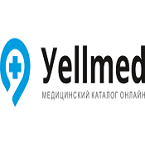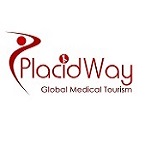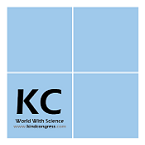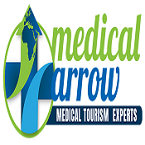Theme: Current Novel Developments in Neurology and Cognitive Neuroscience Research
Cognitive Neuroscience 2023
Conference Series LLC LTD, take immense pleasure in inviting all the participants from all over the world to attend our Conference entitled “33rd International Conferences on Neurology and Cognitive Neuroscience (Cognitive Neuroscience 2023)” to be held during January 25-26, 2023 Online Webinar Event.
Cognitive Neuroscience is organized around the theme “Current Novel Developments in Neurology and Cognitive Neuroscience Research”.
COGNITIVE NEUROSCIENCE 2023 will give a perfect platform for sharing and developing innovative ideas on the latest developments and future perspectives in the field of Neurology for the treatment of various Neurological disorders. Attending the COGNITIVE NEUROSCIENCE 2023 is an investment in your career growth. It’s the best way to express your passion towards the Neurology research and update your skills and enhance your knowledge.
COGNITIVE NEUROSCIENCE 2023 participants include Professors, Researchers, Physicians, Business Delegates, Scientists, and Students all over the world. The goal of the COGNITIVE NEUROSCIENCE is to provide you with a rare opportunity to build on what you already know in the research and development of new therapies and techniques and accelerate efforts to enhance health and well-being.
Significance and Scope:
According to International survey of country Resources about 90% of population is suffering from brain disorders. The provision collected information from several experts’ availability of neurological services is much needed. Many neurological disorders results in considerable morbidity where special attention is paid to Rehabilitation and disability, Mostly neurological resources grossly less in world.
WHO has produced report that collaboration with several non-governmental organization including Alzheimer’s disease international, European Parkinson disease Association, International bureau for Epilepsy, World headache alliances and World federation neurology.
Young Scientist Benefits:
- Our conferences provide best Platform for your research through oral presentations.
- Share the ideas with both eminent researchers and mentors.
- Young Scientist Award reorganization certificate and memento to the winners.
- Young Scientists will get appropriate and timely information by this Forum.
- Platform for collaboration among young researchers for better development.
- Award should motivate participants to strive to realize their full potential which could in turn be beneficial to the field as whole.
Top Neurophysiology Conferences in Europe:
Who will attend?
Neurologists, Neurosurgeons, Neurophysiologists, Psychiatrists, Physiatrists, Pharmacists, Research scientists, Neurology Organizations and Societies, Pharmaceutical companies, Neuro and CNS drug Industries, Neuroscience associations & foundations, Professors and Students from Academia in the study of Neurology and Neurophysiology and researchers who utilize neurophysiological techniques and knowledge in diagnosing and treating nervous system disorders.
We truly believe that the COGNITIVE NEUROSCIENCE 2023 will be a highly rewarding international event for everyone and will bring enhancement and Neuro industrial development, which will contribute to improving quality of life.
Track 1: Cognitive Neuroscience
Cognitive neuroscience is a subfield of neuroscience that studies the living processes that underlie human cognition, especially in regards to the relation between brain structures, activity, and cognitive functions. The purpose is to determine how the brain functions and achieves performance. Cognitive neuroscience is considered as a branch of both psychology and neuroscience, because it combines the biological sciences with the behavioral sciences, such as psychiatry and psychology. Machinery that measure brain activity, like functional neuroimaging, can provide insight into physiological observations when behavioral data is insufficient. Decision-making is an example of a biological process that influences cognition.
· Attention
· Consciousness
· Intelligence
· Perception
· Social cognition
· Memory
Related Associations:
Track 2: Aging and Neurodegenerative Disease
Neurodegenerative diseases of the central nervous system are characterized by progressive neuronal death and neurological dysfunction, leading to increased disability and a loss of cognitive or motor functions. Alzheimer’s disease, Parkinson’s disease and amyotrophic lateral sclerosis have neurodegeneration as a primary feature. However, in other CNS diseases such as multiple sclerosis, stroke, traumatic brain injury, and spinal cord injury, neurodegeneration follows another insult, such as demyelination or ischemia. Although there are different primary causes to these diseases, they all share a hallmark of Neuroinflammation. Neuroinflammation can occur through the activation of resident immune cells such as microglia, cells of the innate and adaptive peripheral immune system, meningeal inflammation and autoantibodies directed toward components of the CNS. Despite chronic inflammation being pathogenic in these diseases, local inflammation after insult can also promote endogenous regenerative processes in the CNS, which are key to slowing disease progression. The normal aging process in the healthy brain is associated with a decline in physiological function, a steady increase in levels of neuroinflammation, brain shrinkage, and memory deficits.
· Alzheimer's Disease [AD]
· Parkinson's Disease Dementia [PDD]
· Cerebro Vascular Disease [CVD]
· Lewy Body Disease [LBD]
Related Associations:
Track 3: Neuropsychiatry
Neuropsychiatry or Organic Psychiatry is a branch of medicine that deals with psychiatry as it relates to neurology, in an effort to understand and attribute behavior to the interaction of neurobiology and social psychology factors. Within neuropsychiatry, the mind is considered "as an emergent property of the brain", whereas other behavioral and neurological specialties might consider the two as separate entities. Neuropsychiatry preceded the current disciplines of psychiatry and neurology, which previously had common training; however, those disciplines have subsequently diverged and are typically practiced separately.
Currently, neuropsychiatry has become a growing subspecialty of psychiatry as it closely relates the fields of neuropsychology and behavioral neurology, and attempts to utilize this understanding to better treat illnesses that fall under both neurological and mental disorder classifications.
· Anxiety and hyperactivity disorder
· Delirium
· Chronic fatigue syndrome
· Cognitive impairments
Related Associations:
Track 4: Neuro Pharmaceutics
The drugs are characterized by the chemical substances that communicate with the neurons which have different impacts on nervous system. A drug used to treat Neuropsychiatric, Neuropsychological, or Nervous-system disorders. Neuro-pharmaceutics focuses on identification of therapeutic targets, and then translating those discoveries into drug and therapy development. Research in Neuropharmaceutics includes: drug discovery for limiting high frequency activity in Epilepsy; drug transport proteins that control drug distribution to target tissues; spinal delivery of analgesics to chronic pain treatment; drugs for the treatment of depression, bipolar disorder, and schizophrenia; intranasal delivery methods for the treatment of Alzheimer’s disease; development of strategies to evaluate therapeutics on preclinical models of Alzheimer’s and Parkinson’s disease; anti-atherogenic and anti-diabetic therapies for the prevention and treatment of AD and other age-related dementias; and development of analgesic agents for chronic pain.
· CNS stimulants
· Dissociative anesthetics
· Hallucinogens
· Central Nervous System (CNS) depressant
Related Associations:
Track 5: Neurotherapeutics
Neurotherapeutics is the treatment of disorders that affect the nervous system. It is an older term for the treatment of psychological, psychiatric, and nervous disorders. Innovative treatments include neurochemical and molecular targets, genes and epigenetic therapies, cognitive construct-based behavioral Neurotherapeutics is a quarterly peer-reviewed medical journal covering research on experimental treatments of neurological disorders. There is a profound increase in the diagnostics procedure and drug discovery in the field of Neurology. It includes Stem cells and treatment, Nerve injury and repair Clinical Case report, Neurogenesis, cell and gene based approach and Neurotransmitter release and cell repair.
· Stem cell therapies
· HIV related cognitive dysfunction
· Anti-psychotics and anti-depressives
· Traumatic brain injury
Related Associations:
Track 6: Neurocognitive Disorder
Neurocognitive disorder is a general term that describes decreased mental function due to a medical disease other than a psychiatric illness. It is often used synonymously (but incorrectly) with dementia.
· Alzheimer disease
· Creutzfeldt-Jakob disease
· Huntington disease
· Parkinson disease
· Multiple sclerosis
Related Associations:
Track 7: Neurooncology
Neurooncology is a branch of medicine that concerns cancers of the brain and spinal cord. Cancers of the nervous system are often severe conditions that eventually become life threatening. Among the malignant brain cancers, gliomas of the brainstem and pons, glioblastoma multiforme, and high-grade (highly anaplastic) astrocytoma are among the worst. In these cases, untreated survival usually amounts to only a few months, and survival with current radiation and chemotherapy treatments may extend that time from around a year to a year and a half, possibly two or more, depending on the patient's condition, immune function, treatments used, and the specific type of malignant brain neoplasm. Surgery may in some cases be curative, but, as a general rule, malignant brain cancers tend to regenerate and emerge from remission easily, especially highly malignant cases. In such cases, the goal is to excise as much of the mass (tumor cells) and as much of the tumor margin as possible without endangering vital functions or other important cognitive abilities.
· Neurofibromatosis
· Tuberous sclerosis
· Turner syndrome
Related Associations:
Track 8: Cognitive Control
Cognitive control is the process by which goals or plans influence behaviour. Also called executive control, this process can inhibit automatic responses and influence working memory. Cognitive control supports flexible, adaptive responses and complex goal-directed thought. Some disorders, such as schizophrenia and ADHD, are associated with impairments of executive function.
· Intentional selection of thoughts
· Emotions
· Concomitant suppression of inappropriate habitual action
· Behaviors
Related Associations:
Track 9: Common Neurological and Psychiatric Diseases
Cognition is composed of several separate mental abilities or domains that interact to form global cognition. These mental abilities are generally categorized into executive functioning, memory/attention, speed of processing, language, and psychomotor functioning. Even within each of these larger abilities, subsets of these mental abilities are observed. For example, memory can be categorized into declarative memory, episodic memory, semantic memory, procedural memory, visual memory, verbal memory, and prospective memory; furthermore, within each of these memory types, further distinctions can be made. Different brain regions and structures are responsible for each of these particular mental abilities. Thus, if these brain regions and structures are compromised by disease-related insults, this will produce cognitive deficits in certain mental abilities.
A number of diseases such as hypertension, heart disease, and diabetes are known to negatively impact neurological functioning, which in turn reduces cognitive efficiency and creates specific cognitive deficits. The patterns of cognitive deficits can be referred to as cognitive profiles.
· Schizophrenia and cognition
· Bipolar disorder and cognition
· Depression and cognition
· Anxiety disorders and cognition
Related Associations:
Track 10: Cognitive and Behavioral Neuroscience
Behavioral neuroscience uncovers how the brain influences behavior by applying neurobiology and neurophysiology to the study of physiology, genetics, and developmental mechanisms. As the name suggests, this subfield is the link between neuroscience and behavior. Behavioral neuroscience focuses on nerve cells, neurotransmitters, and neural circuits to investigate the biological processes that underlie both normal and abnormal behavior.
One of the major aims of cognitive neuroscience is to identify the deficiencies within neural systems that mark various psychiatry and neurodegenerative disorders. Cognitive neuroscientists tend to have a background in experimental psychology, neurobiology, neurology, physics, and mathematics.
· Sensory and motor systems
· Decision-making
· Attention
· Awareness
· Mood
Related Associations:
Track 11: Neurological Disorders
Neurological disorders are medically defined as disorders that affect the brain as well as the nerves found throughout the human body and the spinal cord. Structural, biochemical or electrical abnormalities in the brain, spinal cord or other nerves can result in a range of symptoms. Examples of symptoms include paralysis, muscle weakness, poor coordination, loss of sensation, seizures, confusion, pain and altered levels of consciousness.
Degenerative nerve diseases can be serious or life-threatening. It depends on the type. Most of them have no cure. Treatments may help improve symptoms, relieve pain, and increase mobility.
· Epilepsy
· Dementia
· Migraine
· Brain tumors
Related Associations:
Track 12: The Cognitive Approach in Practice
In addition to adding to our understanding of how the human mind works, the field of cognitive psychology has also had an impact on approaches to mental health. Before the 1970s, many mental health treatments were focused more on psychoanalytic, behavioral, and humanistic approaches.
The so-called "cognitive revolution" put a greater emphasis on understanding the way people process information and how thinking patterns might contribute to psychological distress. Thanks to research in this area, new approaches to treatment were developed to help treat depression, anxiety, phobias, and other psychological disorders.
Cognitive behavioral therapy and rational emotive behavior therapy are two methods in which clients and therapists focus on the underlying cognitions, or thoughts, that contribute to psychological distress.
· Thinking memory
· Forgetting
· Perception
· Attention
Related Associations:
Track 13: Brain Imaging
Brain imaging refers to techniques that employ an interaction between brain tissue and various forms of energy (e.g., electromagnetic or particle radiation), rather than physical incision, to capture positional data about the structure and function of the brain. Such data are used to create corresponding brain maps. Structural images delineate brain tissues such as white versus gray matter, vasculature, and bone, based on their physical properties (tissue density or nuclear resonance characteristics). Functional images capture physiological activities in the brain (metabolism, blood flow, chemical composition, absorption) typically coupled to neuronal firing. Functional imaging has two possible aims. In clinical applications the goal is typically to differentiate normal physiological activities in a healthy brain from those in perturbed states (e.g., stroke, Alzheimer’s disease).
· Positron emission tomography (PET)
· Near infrared spectroscopy (NIRS)
· Magnetoencephalogram (MEG)
· Electroencephalography (EEG)
· Functional magnetic resonance imaging (fMRI)
Related Associations:
Track 14: Sensory Neuroscience
Sensory neuroscience is a subfield of neuroscience which tries to understand the behaviour of neurons in sensory systems. Since the neural code is unknown, it is difficult to begin understanding the brain by looking at the behaviour of more abstract neurons. Since it is possible to experimentally control the stimulus a sensory system experiences, by recording responses from neurons while exposing sensory systems to stimuli it may be possible to gain insights into how the outside world is represented. Some scientists hope that knowing how information about the outside world is represented in the brain will be an important stepping stone in our understanding of how the brain as a whole functions.
· Brain-integrating systems
· Auditory and vestibular systems
· Hearing and balance
· Olfaction
Related Associations:
Track 15: Cellular and Molecular Neuroscience
The basic units of the nervous system are exquisitely specialized cell types called neurons and glia. Neurons, with their extensive dendrites and axons, produce unique electrical events and use a complex, highly evolved system for communicating with one another. Glia is a diverse family of cells that perform a variety of supportive functions throughout the nervous system.
Cellular and molecular neuroscientists seek a thorough understanding of the fundamental processes within and among neurons and glia, which emerge from the interplay of a large number of signaling molecules, ion channels, and numerous other fine-tuned components.
· Ion channels
· Transporters
· Transcriptional regulators
· Neurotransmitters
· Neuromodulators
Related Associations:
Track 16: Neuropathology
Neuropathology is a specialty within the study of pathology focused on the disease of the brain, spinal cord, and neural tissue. This includes the central nervous system and the peripheral nervous system. Tissue analysis comes from either surgical biopsies or post mortem autopsies. Common tissue samples include muscle fibers and nervous tissue. Common applications of neuropathology include studying samples of tissue in patients who have Parkinson's disease, Alzheimer's disease, dementia, Huntington's disease, amyotrophic lateral sclerosis, mitochondria disease, and any disorder that has neural deterioration in the brain.
· Lesion
· Cognitive defect
· Dementia
Related Associations:
Track 17: Neuroanesthesia
Neuroanesthesia is a field of anesthesiology which focuses on neurosurgery. Anesthesia is not used during the middle of an "awake" brain surgery. Awake brain surgery is where the patient is conscious for the middle of the procedure and sedated for the beginning and end. This procedure is used when the tumor does not have clear boundaries and the surgeon wants to know if they are invading on critical regions of the brain which involve functions like talking, cognition, vision, and hearing. It will also be conducted for procedures which the surgeon is trying to combat epileptic seizures.
· Surgical resection of Arterio Venous Malformation (AVM)
· Deep Brain Stimulation (DBS)
· Prone positioning lumbar spine surgery
· Endovascular therapy
Related Associations:
Track 18: Neuropsychopharmacology
Drugs and other mind-altering chemicals can influence all aspects of human psychology, including cognition, emotion, motivation, and performance. For known drugs, predictions of the type, onset, magnitude, and/or duration of effects in individuals or groups can be limited by incomplete knowledge of the interacting processes that govern drug effects. Clinical, field, and research experience reveals that drug effects in individual humans arise from interactions of multiple factors, including (but not limited to) the drug itself; its dose and route of use; the demand characteristics of the current situation; and the individual’s health, physiology, and experience with drugs and performance demands. Attempts to predict the effects of new drugs are hampered by the possible surprise in structure, targets, delivery, mechanisms of action, interactions with other drugs, and varying performance conditions.
· Sleep disorders
· Anxiety disorders
· Bipolar disorder
· Eating disorders
Related Associations:
Track 19: Brain Plasticity
Brain plasticity refers to changes that occur in brain organization and function as a result of experience. There is now considerable evidence that brain activity associated with a psychological state or process can change throughout life as a function of factors such as sleep, maturation, experience, damage etc. Bain plasticity represents a challenge to those seeking to develop neuronal indexes for psychological states—i.e., outcomes, concomitants, markers, and invariants—on an individual level, because structural, organizational, and functional differences between individuals etc.
· Functional plasticity
· Developmental plasticity
· Structural plasticity
Related Associations:
COGNITIVE NEUROSCIENCE 2023 welcomes all attendees, participants, students and exhibitors from all over the world. We are truly delighted to invite you to attend the “33rd International Conference on Neurology and Cognitive Neuroscience", which is going to be held January 25-26, 2023 Barcelona, Spain.
COGNITIVE NEUROSCIENCE 2023 aims to congregate the Neurophysiologists, Neurologists, Neurosurgeons, psychiatrists, physiatrists, Pharmacists, Research scientists, Neurology Organizations and societies, Professors and Students from Academia across the globe to provide an international forum for the dissemination of original research results, new ideas and practical development experiences. We invite you to join us at the COGNITIVE NEUROSCIENCE 2023, where you will be sure to have a meaningful experience with scholars from around the world.
For more details please visit- https://neurocognitivedisorders.neurologyconference.com/
Importance and Scope:
Neurological disorders become a growing threat, due to the demographic change and the resulting increase of elderly populations in Europe. It is estimated that in 2040, 14 million Europeans will be affected by Alzheimer’s disease that will cost about EUR 140 billion in care per year. Mental health and research on neuropsychiatric diseases were priorities, with more than EUR 280 million invested since 2007. Brain diseases account for 35% of the overall disease burden and cost European society almost euro 400 billion per year.
The European pharmaceutical industry spent approximately €3.3 billion on brain research per year, corresponding to 79% of the total funding for brain research in Europe. Research on neurodegenerative diseases, a subset of neurological diseases, was supported with EUR 401 million, with priority on Alzheimer’s disease and Parkinson’s disease. Research on neuropsychiatric diseases such as depression or schizophrenia has been supported with EUR 283 million. In Europe overall, neurological damage accounts for 40% of people who are severely disabled and who require daily help.
Neurophysiology continues to advance, with the development of new applications such as brainstem mapping, spinal cord mapping, monitoring for position-related nerve injuries, and many others.
Conference Highlights:
- Cognitive Neuroscience
- Dementia
- Vascular Dementia
- Neurodegeneration And Aging Disorders
- Neuropsychiatry
- Neurology Nursing
- Neuro Pharmaceutics
- Neurotherapeutics
- Pathogenesis Of Cognitive Disorders
- Cognition And Behaviour
- Consciousness
- Neuro Oncology
- Neuro Surgery
- Challenges In Neurosurgery
Why to attend???
With members from around the world focused on learning about Neurology and Neurophysiology, this is your single best opportunity to reach the largest assemblage of participants from the scientific community. Conduct demonstrations, distribute information, meet with eminent personalities, and make a splash with latest research innovations at this outstanding event. World-renowned speakers, the most recent Diagnostic techniques, tactics, and the newest updates in the field of Neurology and Neurophysiology are hallmarks of this conference.
Major Neurology and Neurophysiology Associations around the Globe:
- American Clinical Neurophysiology Society
- American Physiological Society
- American Board of Psychiatry and Neurology (ABPN)
- American Neurological Association (ANA)
- American Academy of Neurology
- American Society of Neuroimaging
- American Association of Neurological Surgeons
- Child Neurology Society
- European Federation of Neurological Societies
- Indian Academy of Neurology
- Neurological Society of India
Target Audience:
Neurologists, Neurosurgeons, Neurophysiologists, psychiatrists, physiatrists, Pharmacists, Research scientists, Neurology Organizations and societies, Pharmaceutical (drug design and discovery) companies, Neuro and CNS drug Industries, Neuroscience associations & foundations, Professors and Students from Academia in the study of Neurology and Neurophysiology and researchers who utilize neurophysiological techniques and knowledge in the diagnosis and management of patients with disorders of the nervous system.
Top Universities around the globe:
- Dalhousie University
- Leiden University- Neither land
- Temple University USA
- University Oklahoma
- Boston Coll USA
- Florida International University
- University California–Davis
- University Sheffield
- University Manchester
- University of Nottingham
- Cardiff University
- University of Toronto–Canada
Major Hospitals around the Globe:
All around the globe there are 6000 hospitals working on Neurology
Some of them among them are:
- Johns Hopkins Hospital
- World Brain Center Hospital
- Duke University Hospital
- Edward Hospital
- Munson Medical Center
Top companies around the globe:
- Janssen Pharmaceuticals
- Pfizer
- Eisai
- Novartis Pharmaceutical Corporation
- Actinogen Limited
- Alector LLC
- AlzProtect SAS
- TauRx Therapeutics Ltd
- Pacific Northwest Biotechnology
- Tautatis Incorporated
- Forest Laboratories
Glance at Market share:
The Americas is estimated to be the largest market for Neurophysiology needles and electrodes owing to the high incidence of brain disorders like Alzheimer's disease in the US. The neurophysiology needles and electrodes market will grow at a modest CAGR of close to 4% by 2020. Few companies involved are Biomed Products, Bionen Medical Devices, Blacrock Microsystems, Cognionics, Dymedix Diagnostics, HydroDot, Jari Electrode Supply, NR Sign, Optima Medical, R&D Medical Electrodes, Technomed Europe and Unimed Electrode Supplies. Neurophysiology Electrodes in Europe market, especially in Germany, UK, France, Italy, Spain and Russia.
Advantages of Participating at our conference:
As an add on advantage the Speaker & Abstract pages created in Google on your profile under your name would get worldwide visibility.
- Our robust online publicity attracts 20000+ users and 60000+ views to our Library of Abstracts which brings worldwide exposure to the researchers and speakers participate in our conferences.
- All the conference participants can earn up to 16-18 CME Credits by participating at our Neurology and Cognitive NeuroScience Conference scheduled at Barcelona, Spain.
- To attain professional development we offer our participants a chance to earn up to 21 CPD Credits authorized by CPD Standards Office, UK by participating at our Neuroscience Conferences.
- All the conference participants will be awarded with IOCM Certification.
- All the conference participants will have a unique opportunity to participate at one on one Meeting with Eminent Speakers.
- A Unique opportunity to hear what the global researchers are talking about at our Keynote sessions by world’s most eminent researchers in the field of Neuroscience.
- Top Industries Representation of Industrial Leaders, where you get a great opportunity to meet and discuss with the Industrial Leaders in person.
- Thought provoking Symposia’s.
- Workshops on Carrier Development.
- Preconference workshops in all major countries.
- Nominations for Best Poster Award.
- Outstanding Young Researcher Award.
- Group Registration benefits.
Benefits of Participation | Speaker:
- Explore the best in Cutting edge Research.
- Worldwide acknowledgment of Researcher’s profile.
- Obtain professional development credits.
- Your presence and talk will be recorded and hosted on YouTube and Vimeo which in turn will gain potential value to your research profile.
- Make Lasting connections at Networking and Social Events.
- We provide unique convergence of Networking, Learning and Fun into a single package.
- An opportunity to give One page advertisement in abstract book and flyers distribution which eventually gets 1 Million views and add great value to your research profile.
- Learn beyond your field of interest, a change to know more about the new topics and research apart from your core subject.
Benefit of Participation | Sponsor:
- Worlds No: 1 Platform to show case Neurology and Neuroscience Products.
- Exposure to the international atmosphere will increase the odds of getting new business.
- Opportunity to showcase the new technology, new products of your company, and/or the service your industry to a broad international audience.
- Attain with an exceptional format in showcasing the products and services and to gain the potential clients for the future business prospects.
- Our Neurology Conference in the One and only location to reach the top customers.
- Make new connections and fostering potential partnerships.
- Increase your business by lead generation through our conference participants.
- Build a successful business takes a lot of time, effort and drive, so it’s always good to have a network of colleagues and associates to draw energy from people who share a similar drive and objective.
- Flip side of learning new things is relearning classic techniques. Neuroscience conferences create opportunities for greater focus and reflection that could help you take your business to the next level.
- Benchmarking key strategies for business and moving it forward.
- Get answers to your business questions and challenges from credible individuals at our conference.
- Exposure and Networking Opportunity with the various top decision makers of the respective organizations will eventually grow your business in Global market.
- Get to know more about your competitors are first-hand, learn more about their businesses, and discover their strengths and weaknesses, all of which can add to your business’s competitive edge.
- Encounter new vendors and suppliers for your business.
- Real Benefits in New business-Many Organizations make deals and sign contracts at our Neurology Conference.
- We offer you the Website visibility to more than 35K visitors in less than 6 months.
- Promotional logo of your organization at our conference banner, website and other proceedings, branding and marketing material.
- Hosting session slots, poster awards, recognition in opening ceremony and complimentary registrations, exhibition/workshop booth, low-budget options.
Benefit of Association for Collaborators:
- No one in the world have this huge visitors towards Neuroscience, these is the best platform to show case your society create long-lasting relationships with the peers.
- Promotional content and Logo of your Association at our conference banner, website and other proceedings, branding and marketing material will increase your subscribers/Members number by 20%.
- Our Website visibility to your Organization page can give a great impact for your association in the Global Market.
- Your representatives can network with key conference delegates to update their knowledge and understanding of your organization and services.
- Details will be added to the conference press release where the details will be shared to <100000 outlets.
- Details will be incorporated in all conference promotional materials which will be distributed to Hospitals, Universities, Society and Researchers.
Benefits of Participation | Delegate:
- Helps to meet Experts & Influencers Face to Face.
- Opportunities to meet researchers and experts of same field and share new ideas.
- Can help to know New Tips & Tactics.
- Professional Development – Elevate your knowledge and Skills.
- Conference attendance inspires, rejuvenates, and energizes delegates.
- Your participation at our conference will be helpful for a new approach and ideology that can be utilized for the extending the outcome of Companies or Industries.
- Enjoy the alluring city environment where the conference is being held.
- Raise your profile by being well-known.
Conference Highlights
- Cognitive Neuroscience
- Aging and Neurodegenerative Disease
- Neuropsychiatry
- Neuro Pharmaceutics
- Neurotherapeutics
- Neurocognitive Disorder
- Neurooncology
- Cognitive Control
- Common Neurological and Psychiatric Diseases
- Cognitive and Behavioral Neuroscience
- Neurological Disorders
- The Cognitive Approach in Practice
- Brain Imaging
- Sensory Neuroscience.
- Cellular and Molecular Neuroscience
- Neuropathology
- Neuroanesthesia
- Neuropsychopharmacology
- Brain Plasticity
To share your views and research, please click here to register for the Conference.
To Collaborate Scientific Professionals around the World
| Conference Date | January 25-26, 2023 | ||
| Sponsors & Exhibitors |
|
||
| Speaker Opportunity Closed | Day 1 | ||
| Poster Opportunity Closed | Click Here to View | ||
Useful Links
Special Issues
All accepted abstracts will be published in respective Our International Journals.
- Journal of Neurology & Neurophysiology
- Journal of Neurological Disorders
- International Journal of Neurorehabilitation
Abstracts will be provided with Digital Object Identifier by












